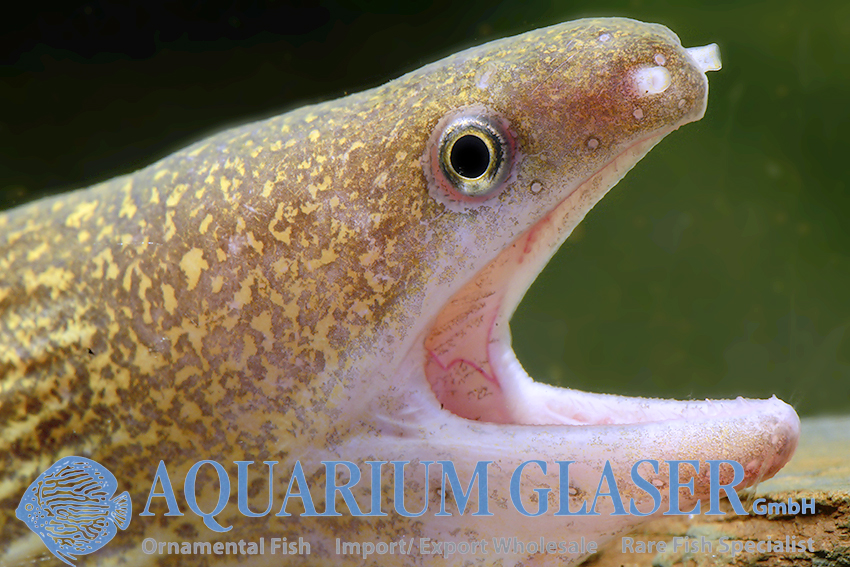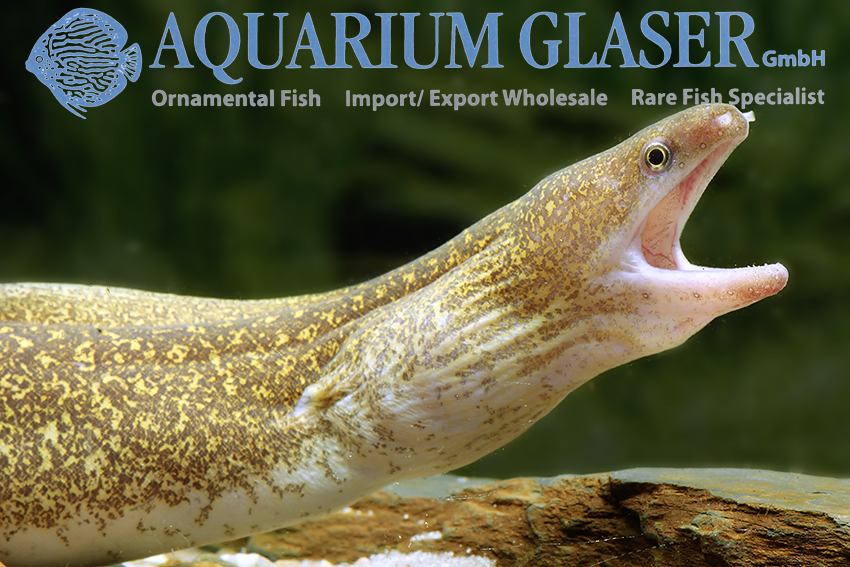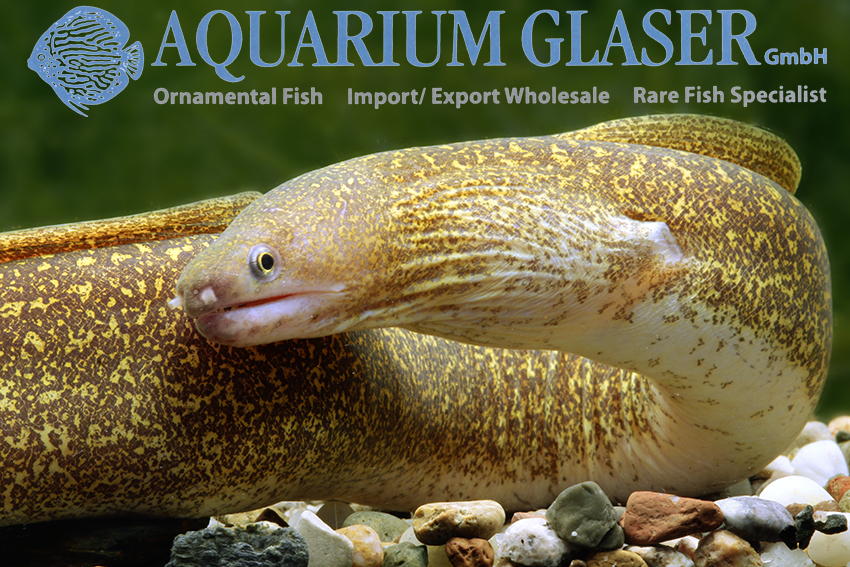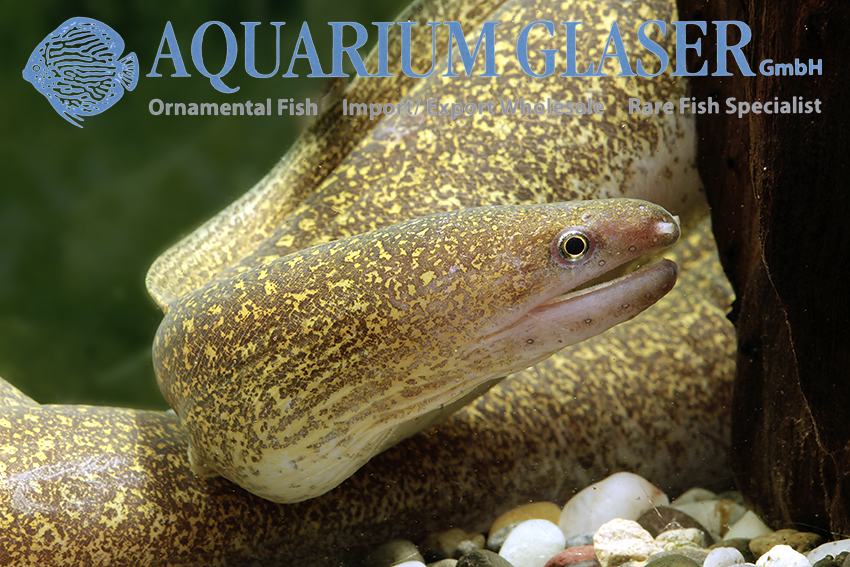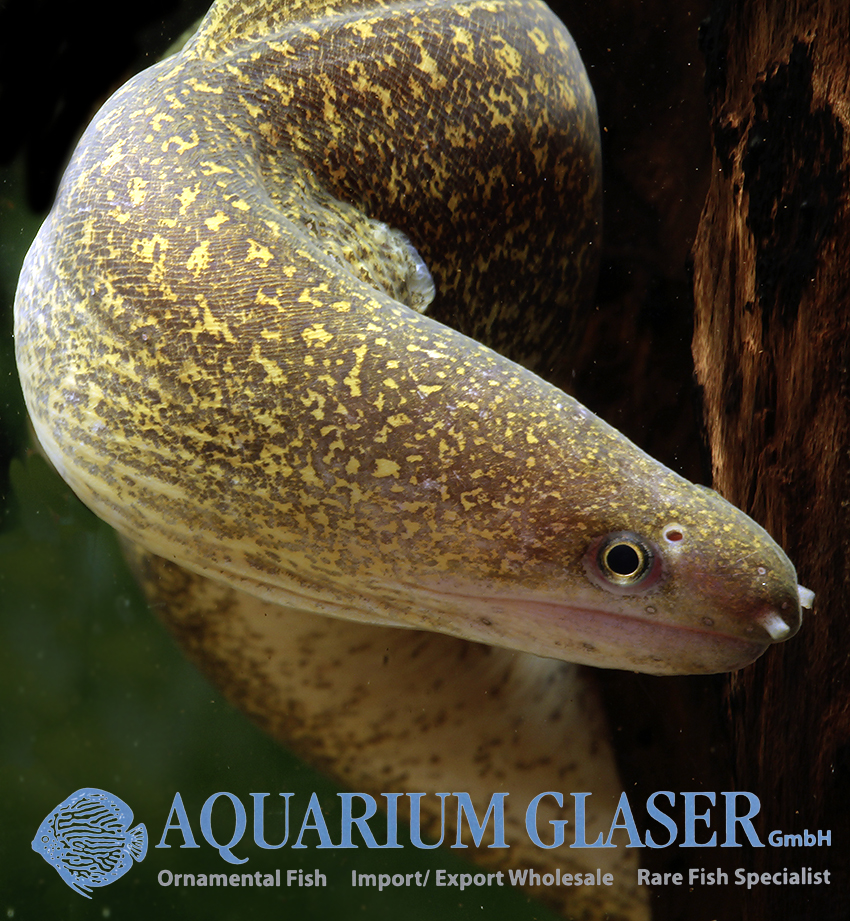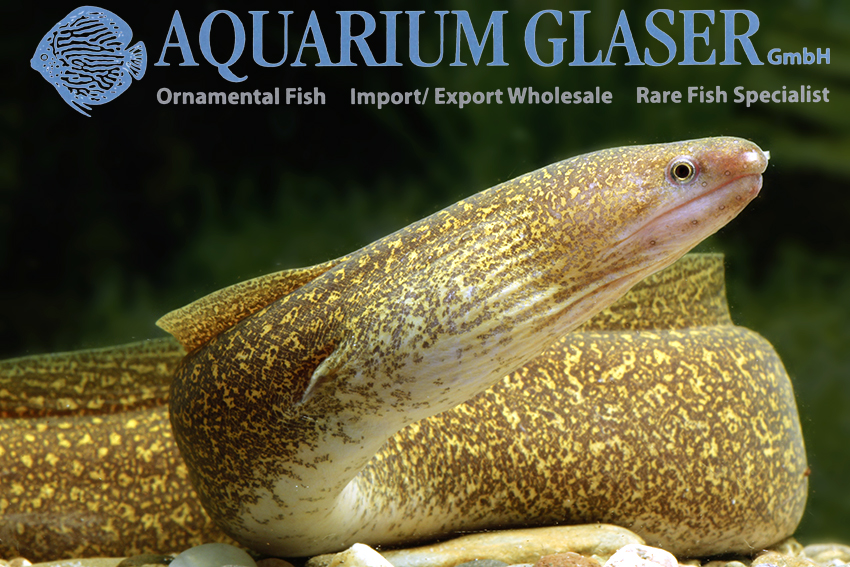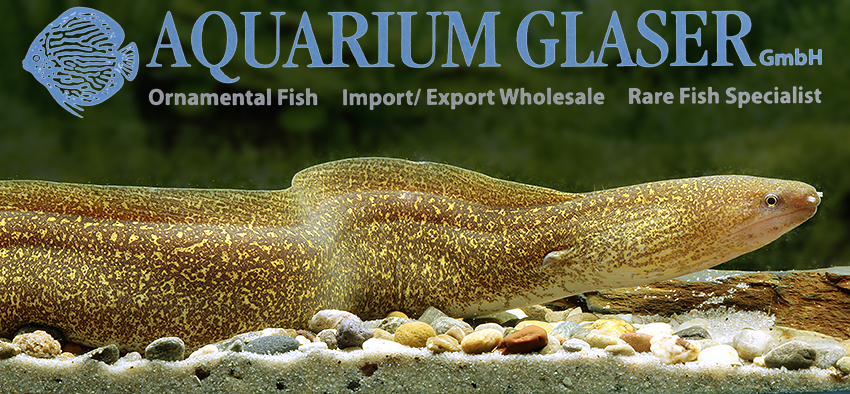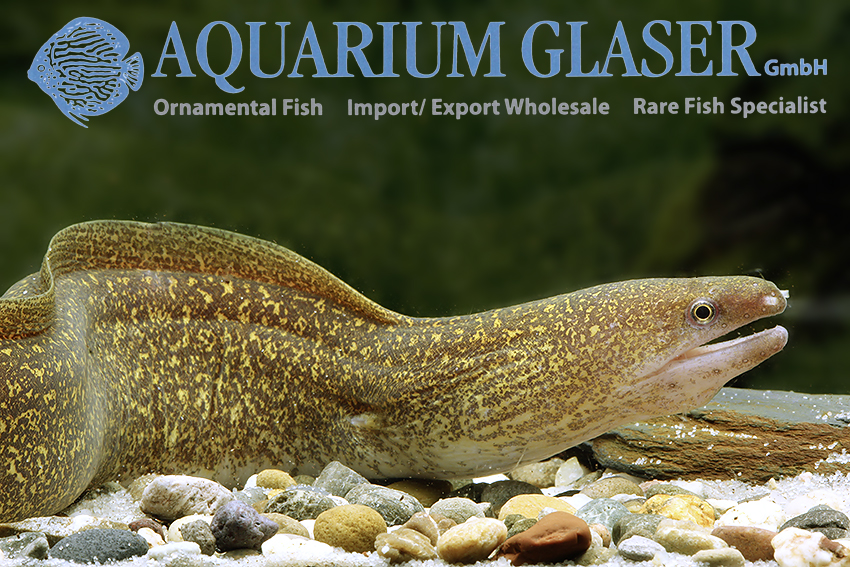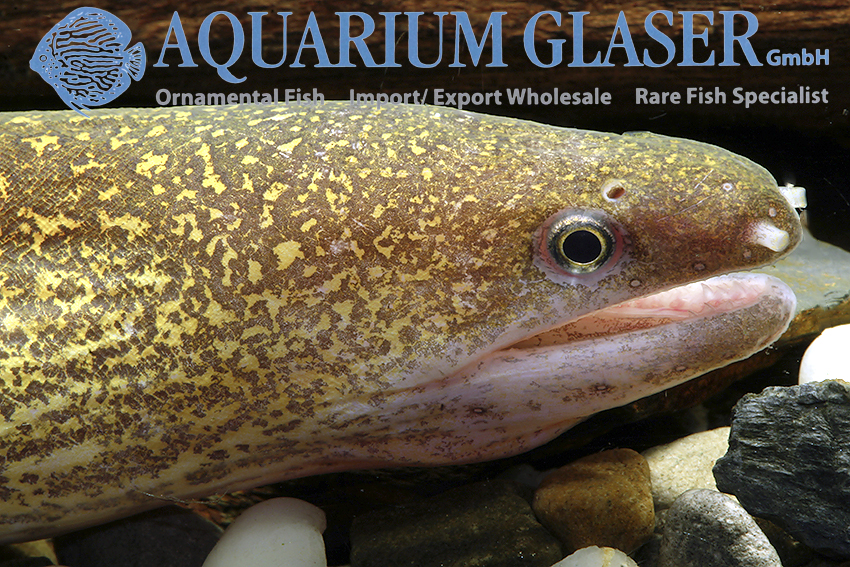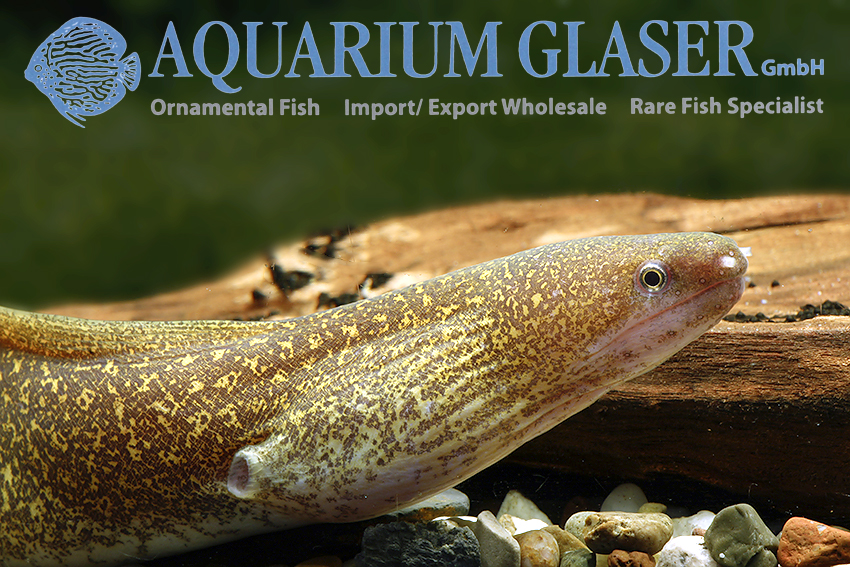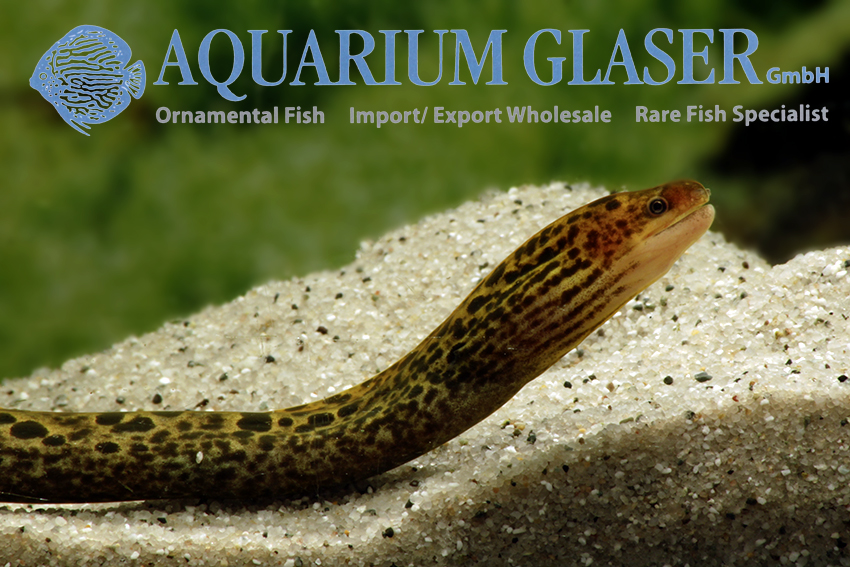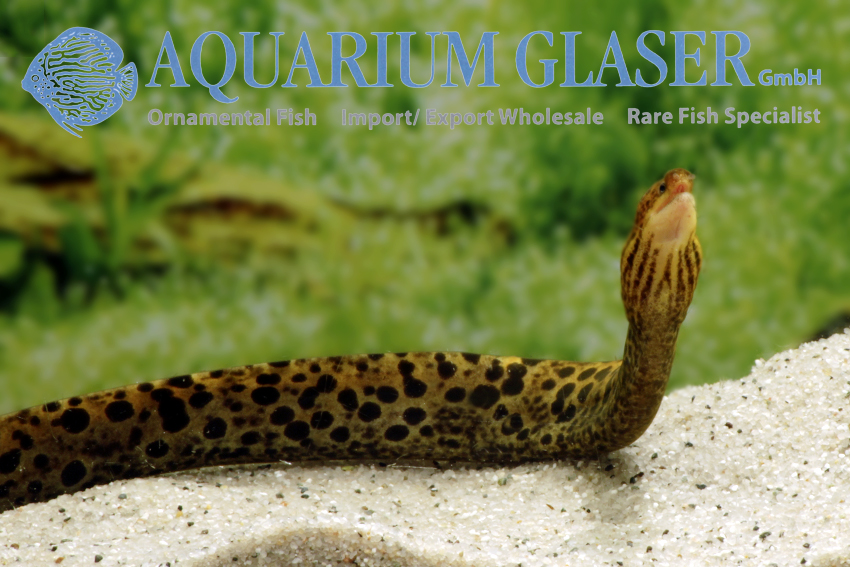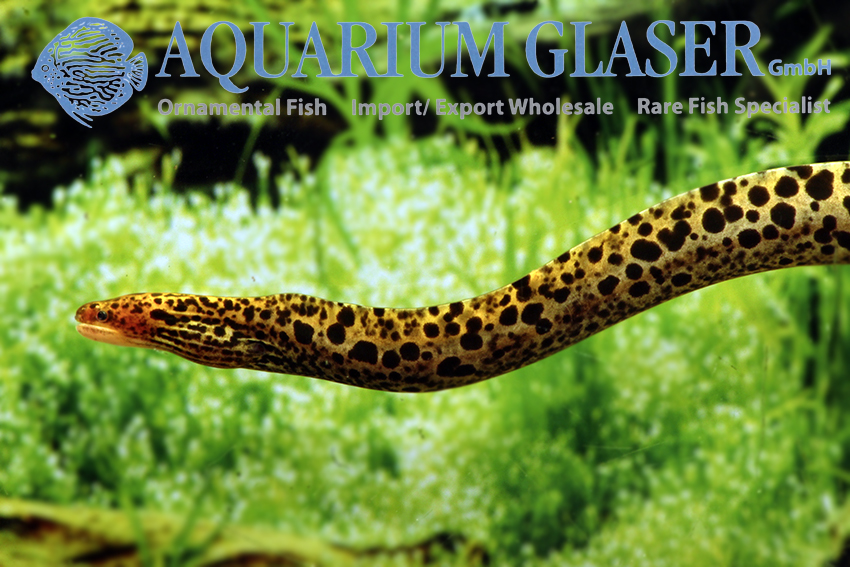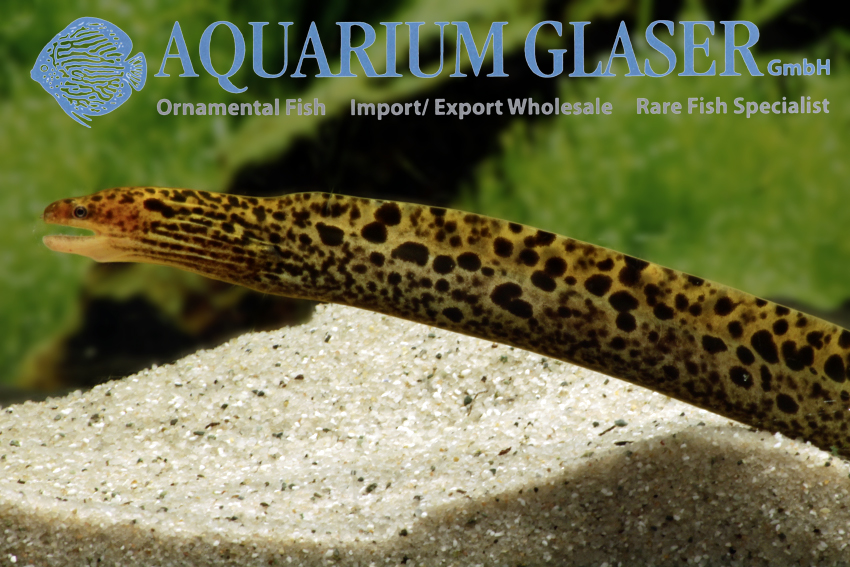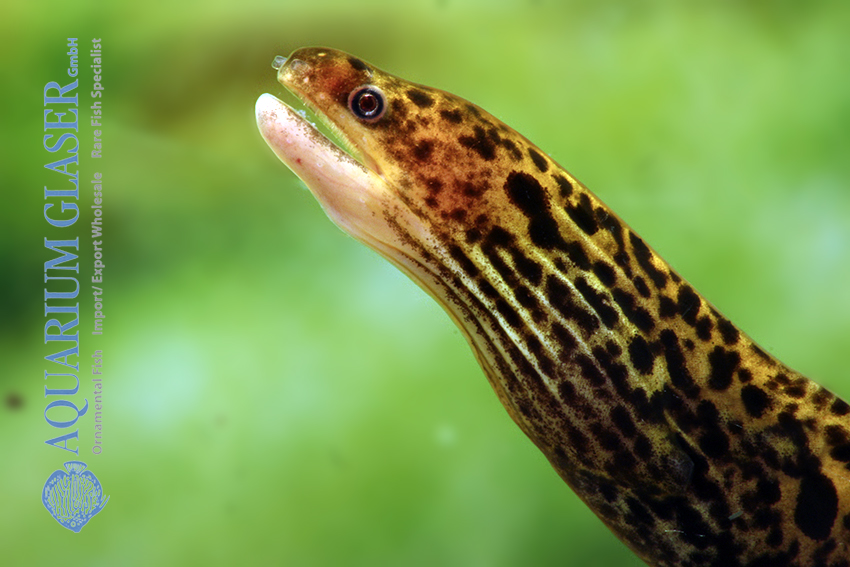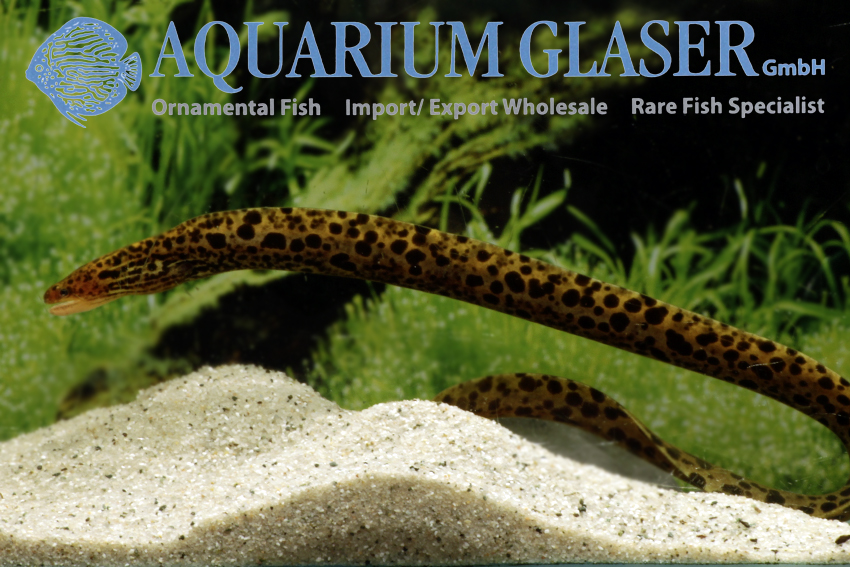For many years the up to 60 cm long moray eel species Gymnothorax tile has been sold as “freshwater moray”. It is true that G. tile can live in pure fresh water for a while (a few months) without showing any discomfort. But practice shows that this moray eel species is much more persistent in brackish or sea water (15-30 grams of salt per liter), as known from other fish species of the tidal zone, such as Scats, Monos etc. When keeping the fish in fresh water, the pH-value should not drop below 8, otherwise the moray eels will stop eating.
They are predatory fish that feed exclusively on carnivorous food: small fish, crabs and shrimps form their natural food. In the aquarium Frutti di Mare are an ideal substitute, frozen smelts and shrimps should be used as addition. It may take several weeks before these morays accept food. This is normal and not a cause for concern. The best thing is to put some live food fish in the aquarium; once they have disappeared, the spell is broken, the moray eel is accustomed and from now on it becomes a greedy eater. You have to watch your fingers a little bit; the moray eels see badly and orientate themselves by their sense of smell. If the keeper’s fingers still smell of food, it can happen that the moray eel bites him. This is not poisonous, but it bleeds violently and is in danger of infection.
Gymnothorax tile is very tolerant against conspecifics, as well as other large fish. The water temperature can be between 22 and 30°C. As with all brackish and saltwater fish the oxygen demand is high. The species is distributed along large parts of the coasts of the Indian Ocean.
For our customers: the animals have code 419675 on our stocklist. Please note that we only supply the wholesale trade.
Text & photos: Frank Schäfer





